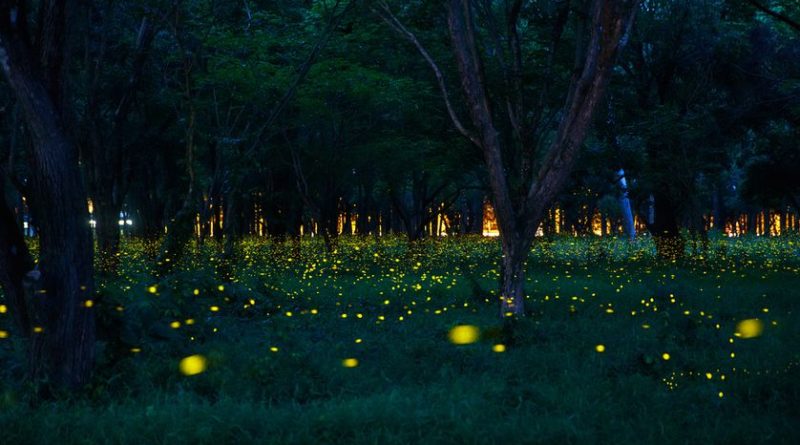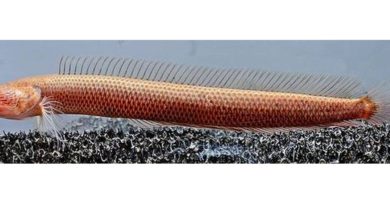Fireflies are now threatened with extinction
Scientists say that the estimated 2,000 species of fireflies have been declining for years. Losing these glowing creatures, robs future generations of one of the simplest and most pleasurable joys of childhood. It also robs doctors and researchers of a valuable diagnostic tool. By injecting chemicals found in a firefly’s tail into human cells, researchers can detect diseases like cancer and muscular dystrophy.
Fireflies are so important that the Selangor Declaration of 2010 warned that their loss would be a clear sign that the environment is unhealthy. These friendly insects are beneficial to humans and are a joy to observe. They mean us absolutely no harm, yet we are killing them.
By spraying toxic pesticides, polluting our air and water, degrading the landscape, and emitting ever more carbon, we’ve essentially captured nature in a big glass Mason jar, screwed the lid tight, and neglected to punch holes in the top.
- There are 2000 difference species of fireflies.
- Fireflies are found on every continent except Antarctica. (They don’t do well in the cold and are not found near the arctic either.) They like humid, moist areas.
- Fireflies are beetles. Flies have only one set of wings whereas beetles have two sets – one hard, one soft.
- Larval fireflies eat snails, insects, and earthworms. Some adult fireflies eat nectar or pollen, but other adult fireflies don’t eat at all.
- Adult fireflies only live between 5-30 days.
- In many species, the eggs and larvae of the fireflies glow, too.
HOW TO HELP
Fireflies are disappearing all over the world, and it’s believed to be because of human encroachment on habitat and increased light pollution from development and traffic. But there are a few things you can do to help fireflies make a comeback in your area.
None of these steps have been proven to work, mainly because scientists have only been studying firefly populations for a few years and data is still inconclusive. But signs point to human development, light pollution and toxic chemicals as likely culprits behind the dwindling of firefly populations. Follow these steps, and with luck your yard will once again sparkle on summer nights.
Turn off outside lights at night.
Fireflies use their flashing lights to signal each other, attract mates and warn of danger. While the science is still preliminary, it’s likely that human light pollution can disrupt their flashes—making it harder for fireflies to find mates and breed. This leads to fewer fireflies mating and smaller numbers in subsequent generations. You can make your yard a haven for fireflies by turning off exterior and garden lights, and drawing your blinds at night so that interior light doesn’t brighten your yard too much.
Let logs and litter accumulate.
Some species of firefly larvae grow up in rotten logs and the litter that accumulates beneath the forest canopy. To encourage their growth, plant some trees on your property. If you have trees in your yard, consider leaving some natural litter around them to give firefly larvae a place to grow.
Create water features in your landscape.
Most species of fireflies have one thing in common: they thrive around standing water and marshy areas. Ponds, streams and rivers can all provide good habitats for fireflies, but even a small depression full of water can cause them to congregate. Build a small pond or divert a small stream to run through your property, and it’s more likely you’ll see fireflies at night. Chemically treated swimming pools aren’t a good substitute; fireflies are believed to eat the smaller insects, grubs and snails that thrive in natural ponds and streams, and these don’t live in chlorinated environments.
Avoid use of pesticides, especially lawn chemicals.
It’s likely that chemical pesticides and weed killers may also have a negative effect on firefly populations. Fireflies and their larvae may come into contact with other insects that have been poisoned, or they may ingest the poisons from plants that have been sprayed. Avoid using pesticides on your lawn and you may boost firefly populations.
While no formal studies have been done specifically targeted to the effects of lawn chemicals on fireflies. Two known studies indirectly suggest that these chemicals may be harmful to fireflies and larvae. The first study suggests that lawn chemicals are toxic to insects in the lawn where firefly larvae are found [1]. The other study provides proof that lawn chemicals are very toxic to the food that sustains firefly larvae [2]. Both show that lawn chemicals can have a serious detrimental effect on fireflies throughout all growth stages.
A notable example of how pesticide overspraying has affected a local population is the extinction of the dusky seaside sparrow who was native to the salt marshes of Merritt Island in Florida. Its habitat was sprayed with DDT to control mosquitoes and human development quickly changed the ecosystem so much that the bird could not compensate and went extinct.
Many communities over spray for mosquitoes at night just when fireflies are active, flashing and mating. Such over spraying can wipe out firefly populations. These same communities often do not implement more effective control of mosquitoes, such as neighborhood programs to reduce standing water, especially in swimming pools, and usage of mosquito larvacides to prevent the growth and development of mosquitoes in drainage ditches. By encouraging broad spectrum mosquito control efforts and discouraging spraying at times when fireflies are active, communities can actually save money and effect better control of mosquitoes, causing less impact to firefly species and other small animals.
Use natural fertilizers.
While no conclusive studies have been done, it’s possible that chemical fertilizers may have a harmful effect on firefly populations as well—especially since many harmful chemicals in pesticides are also found in chemical fertilizers. Using natural fertilizers may make your yard a more healthy place for fireflies.
Don’t over-mow your lawn.
Fireflies mainly stay on the ground during the day, and frequent mowing may disturb local firefly populations. While you may feel that you need to keep your lawn mowed for aesthetic purposes, consider incorporating some areas of long grasses into your landscaping. Fireflies prefer to live in long grasses, and doing this may boost their population in your yard.
Plant native trees.
Fast growing pine and native trees provide a good habitat for many species of fireflies. Naturalist Terry Lynch, who has studied fireflies for many years, recommends Pine trees because they provide shade and the low light area provided by a canopy actually increasing the amount of time fireflies have to find a mate. Also, the litter produced by pine trees, if left to accumulate, provides a good habitat for earthworms and other small animals which firefly larvae feed upon.
Do NOT introduce earthworms to you yard.
What’s so bad about a worm? For many of us, seeing earthworms under rocks, on sidewalks after rainstorms, and in our gardens is just a fact of life. Few of us think to question the presence of worms or their impact on fireflies.
The truth about earthworms is this: they are not native to any of the northern United States or Canada. Any worms that were here originally were wiped out during the last glaciation. It would be pretty hard for a creature that lives in the upper topsoil to survive the crushing weight, scraping, and sedimentary deposits of a mile-thick hunk of ice.
The impact of earthworms is not limited to plants. The reduction in plant diversity and leaf litter affects the habitat and food availability of insects such as fireflies, which affects the food chain on up, reducing the food available to reptiles, amphibians, birds and small mammals.
The earthworms we currently have in the region are of European origin (which are the same species that you can pick up at a bait shop) and were introduced by settlers ~300 years ago and have been on a human aided journey west since then. These non-native earthworms are contributing to some ecological effects in these glaciated areas that for the last ~12,000 years developed earthworms free. There are native earthworms along the East coast of North America but these populations are small and localized. Current research in that area is showing that these non-native earthworms are having negative effects on native earthworm species also.
Talk to your neighbors.
If you live in a suburban area in close proximity to others, what you do in your own yard will help—but you can create even more habitat for fireflies by enlisting your neighbors in your efforts. Tell your neighbors about your concern over dwindling firefly populations and what they can do to help. If you convince even one or two people on your street, you could help increase firefly habitat in your area even more.
Fireflies are disappearing all over the world. But there are a few things you could do to help—and every little bit counts. Allow some room for wildness on your property—low-hanging trees, forest litter, and long grasses all create welcoming environments for fireflies. Ponds and streams are crucial to firefly populations, and you can further encourage their numbers by reducing the amount of light in your yard at night and by cutting back on chemical fertilizers and pesticides. Follow these tips, and it’s possible you could see a resurgence of fireflies in your area.
References:
1. “Understanding Halofenozide (Mach 2) and Imidacloprid (Merit) Soil Insecticides,” by Daniel A Potter. International SportsTurf Institute, Inc., Turfax, Vol. 6 No. 1 (Jan-Feb 1998)
2. “Relative Toxicities of Chemicals to the Earthworm Eisenia foetida,” by Brian L. Roberts and H. Wyman Dorough. Article first published online: 20 Oct 2009. Environmental Toxicology and Chemistry, Vol. 3, No. 1 (Jan. 1984), pp. 67–78.
Courtesy: firefly.org




